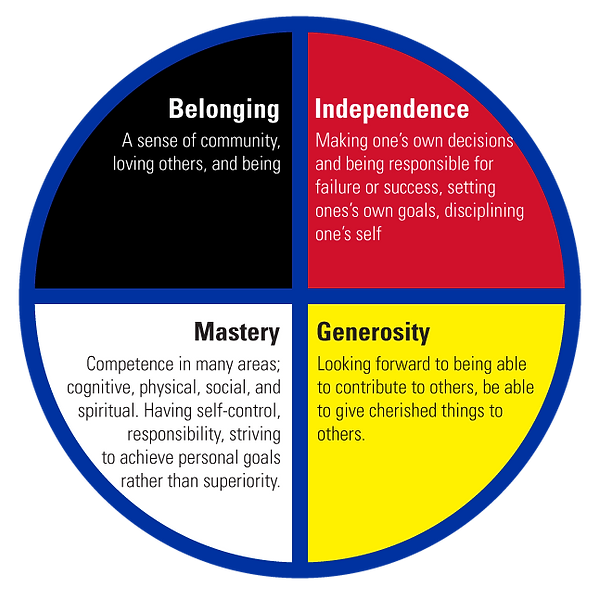Ian: GECOS Program
The Circle of Courage assessment is completed with every Gang Exit and Community Outreach Services (GECOS) client upon initial intake to document any changes or unbalances within the client. Statistically, the “independence” domain is the lowest scoring category for GECOS clients during intake and thus has the most room for growth.
When a client’s independence domain is low scoring, the focus is to support the client to feel empowered and confident in making decisions for themselves while also feeling in control of their life trajectory.
My client, Ian, struggled with their independence for years as they always had a gang to fall back on to support them. Upon reaching out to the GECOS program, Ian’s main focuses were to gain independence, freedom, and the confidence to set goals for themselves and achieve them. It is important to note that they had never reached out to professional support before joining the GECOS program. This was their first step to independence. They allowed themselves to ask for support. This was a risky action for them due to active gang involvement and safety concerns. Frequent meetings each week and discussing goals to disengage from their lifestyle was also very risky.
Everything they worked on with me and continues to work towards today has an element of risk when there is the potential of gang members or ex-associates learning about their disengagement. Although Ian understood the risks, the outcome and rewards were always their focus. They continued to show up and utilize my support until services were no longer required.
One particularly powerful illustration of their newfound independence was their decision to start tattoo removal sessions – a goal they pursued with an empowering sense of accomplishment. I was there for their first consultation, but from then on, they took the reins, personally arranging and attending subsequent appointments.
They eagerly shared their progress with me, and their commitment hasn’t wavered despite the lengthy nature of the removal process. This endeavor not only showcases their blossoming independence but also paves the way for future self-sufficiency. By erasing the tattoos that have often been obstacles to life’s necessities, they’re breaking down barriers to their own autonomy. They finally feel empowered to be their true self while also showing confidence to make positive and impactful changes for their future.
*Names have been changed for staff and client confidentiality

The Circle of Courage, a youth development model based on belonging, mastery, independence, and generosity, merges Indigenous child-rearing methods with modern youth research. Developed by Martin Brokenleg and Larry Brendtro, and outlined in their 1990 book “Reclaiming Youth at Risk”, it gained international use. At the Calgary John Howard Society, the principles of the model have been adopted to assess and track a client’s progress towards their goals and aspirations.

